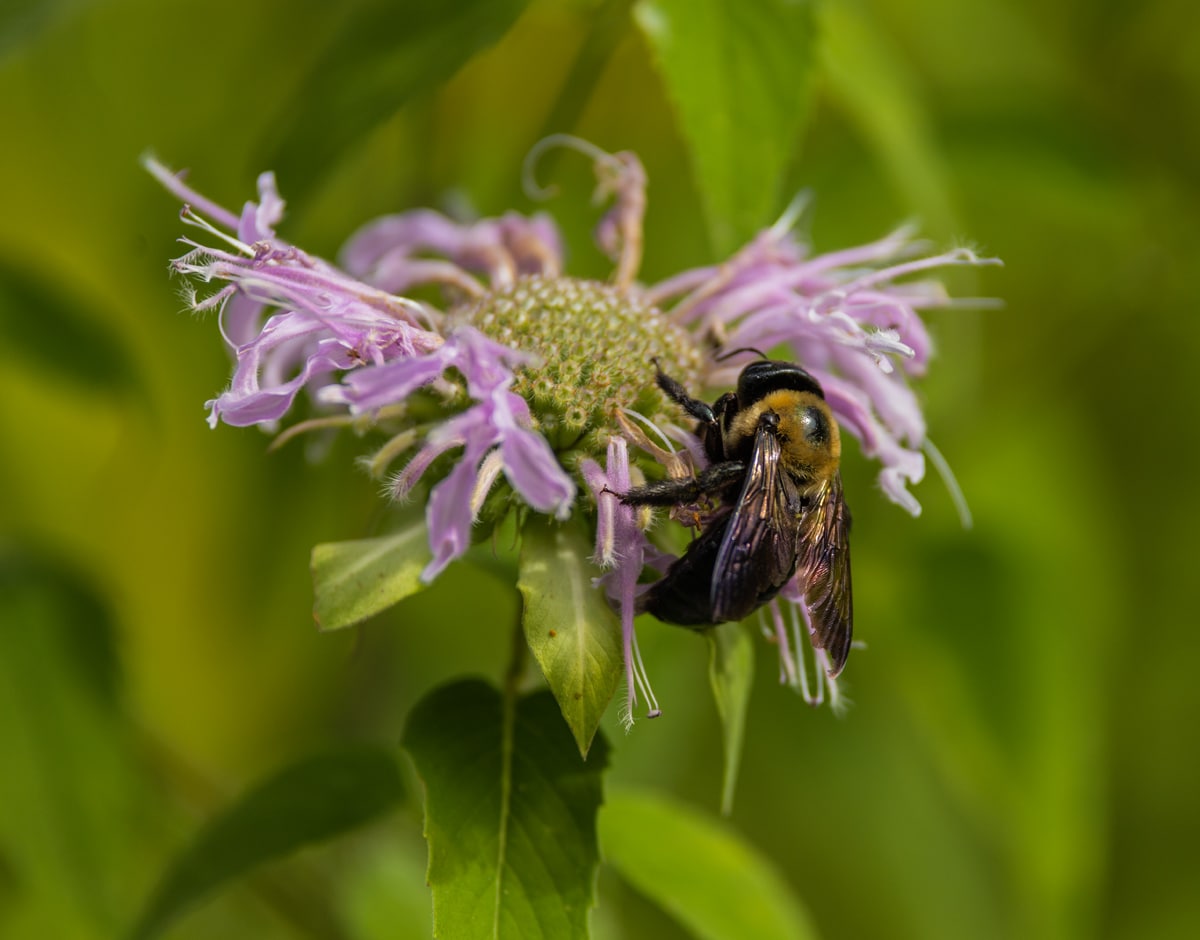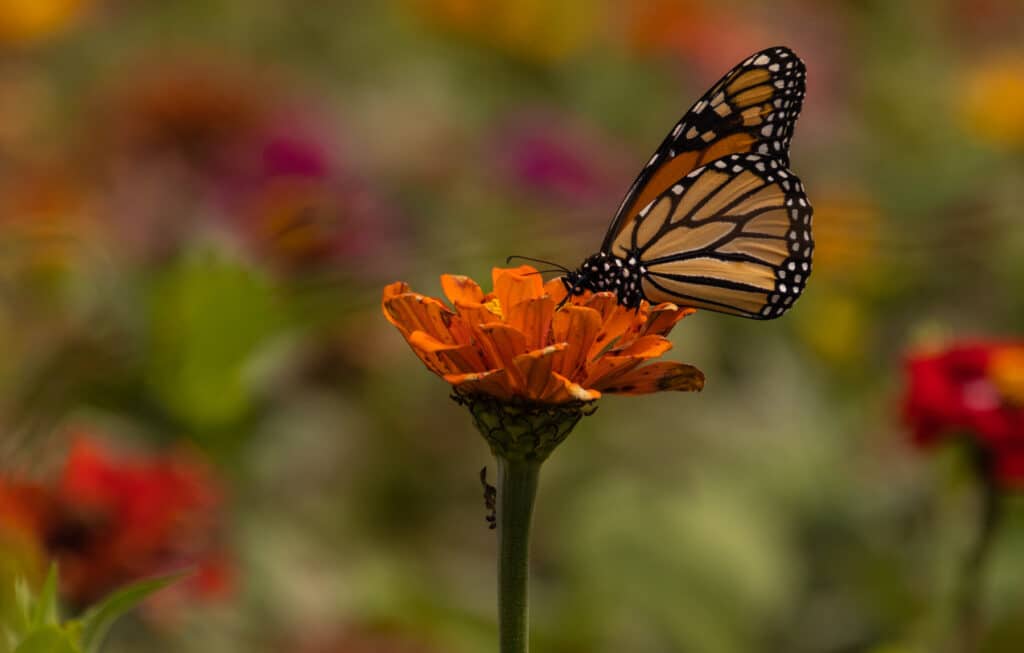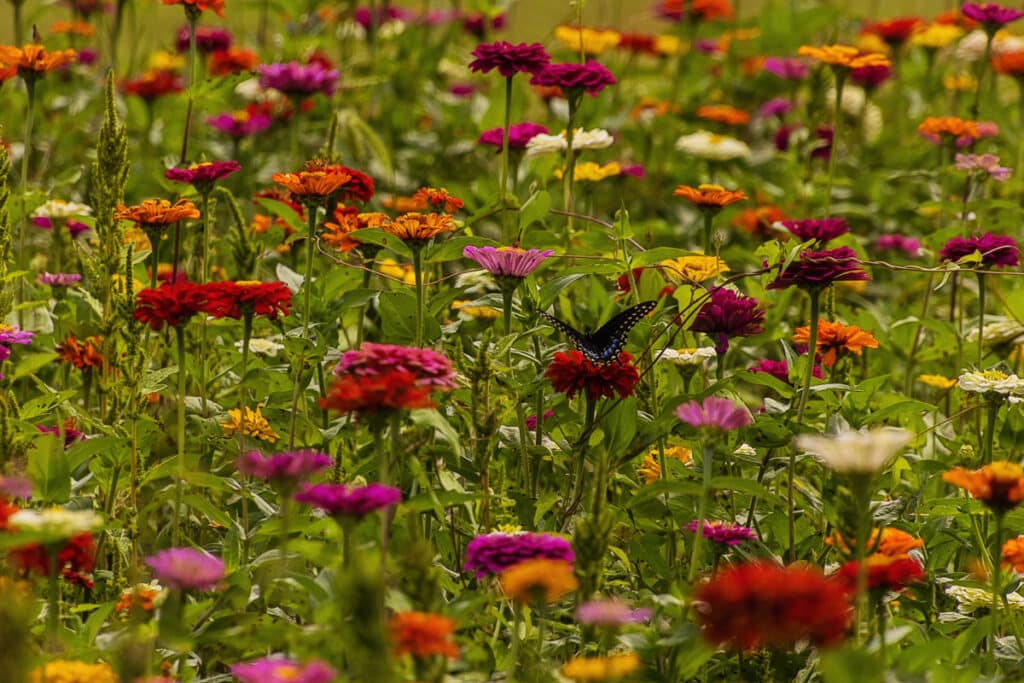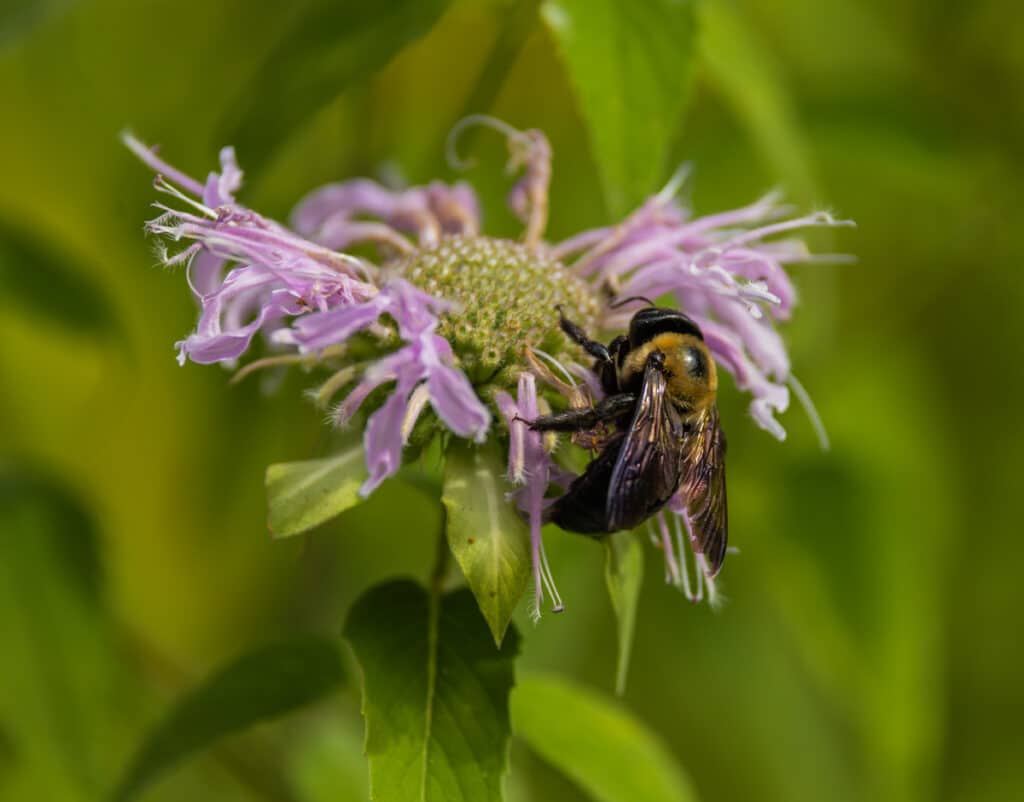
The Decline of Pollinators from Habitat Loss and Pesticides
A discouraging decline of our pollinators over the last several decades has been occurring due to factors that include habitat loss and the use of herbicides or pesticides. These very important pollinator species ensure that the pollen moves within flowers and transfers the pollen from flower to flower. In this pollination process, the pollinators keep our fruit, nuts and vegetables fertilized by moving this pollination process. In other words, pollinators are a very critical part of our food distribution system. Pollinators consists of butterflies, bees, bats, moths, beetles, and hummingbirds. Another source of pollination is by the wind.
Years ago, while driving along the highways you used to see meadows of wildflowers or flowers along the roadside or in the median. Nowadays, there are no longer those flowers or native flowers that you see everywhere along the roadsides. This loss of habitat of pollinator food sources has greatly impacted our small pollinator creatures, especially those that migrate through the Commonwealth of Virginia and even for those pollinators that live here throughout the year. One of the most important reasons for the loss of habitat along the roadsides is due to the use herbicides and grass mowing to maintain those areas along the highways and along rural roads.

The Virginia Department of Transportation started a Pollinator Habitat Program in 2015 creating pollinator waystations with nectar and pollen-friendly flowers which has been successful in attracting these pollinators. We need to continue to build roadside native plant meadows to help with our pollinators and to be able to create a pollinator friendly corridor through Virginia.
Pollinator corridors will provide the habitat needed by using native plants and flowers to provide a food source along the side of roads and highways. The roadside corridors then can connect to meadows or gardens that are located in local area parks, botanical gardens, and community and backyard gardens to provide a healthy corridor habitat for these pollinators.
We need more meadows of native plants along our roadsides and more backyard or community gardens with native plants and milkweed for our pollinators. We need to make sure that our pollinators continue to thrive as their survival is dependent on us to provide food sources for them, so in return, the pollinators will continue to help us significantly as we depend on them for a big portion of our own food supply.
These corridor habitats not only provide pollinators a food source but act as a stop over for many species of pollinators such as the migrating Monarch Butterfly which is now considered an endangered species. The migrating Monarchs travel 3,000 miles each spring and fall from their overwintering home in Mexico to as far north to Canada in the spring and then back to Mexico in the fall. The Monarch butterflies do not travel during the night and will find trees or shrubs to cluster together during the nights of their migrating journey. Another important reason to have pollinator corridors is so these Monarchs have a place to rest on their long migrating journey each spring and fall.

This delicate species is especially in need of pollinator corridors as their host plant, milkweed, is no longer readily available on roadside meadows or in many gardens. There are several varieties of native milkweed that will provide a food for the Monarch caterpillars as they can only eat the leaves of the milkweed plants for their survival, and these caterpillars will remain on the milkweed until it is time for the caterpillar to turn into a chrysalis and eventually create a butterfly.
As it is now, the fall season and fall migration for these pollinators has begun, this is a time of year that becomes very difficult for our pollinators in finding food sources. Planting native plants and milkweed that blooms from spring to fall is very important to the conservation of our pollinators. Whether you own property, have a backyard or a community area, or even if you live in an apartment with a balcony, you can still provide a diverse number of native plants and flowers or milkweed which will create a corridor habitat area for our pollinators.
A good way to get started in helping our pollinators with finding food sources and help them increase their populations is by planting some native fall plants now during this fall season as our migrating pollinators fly through the pathway of our pollinator corridors here in Virginia.

Resources:
Virginia Department of Transportation (VDOT): https://www.virginiadot.org/programs/pollinator_habitat_program.asp
Xerces Society for Invertebrate Conservation: https://xerces.org/
Pollinator Partnership: https://pollinator.org/